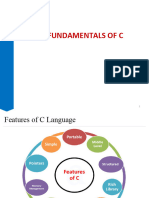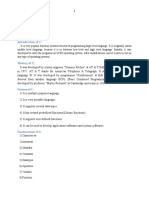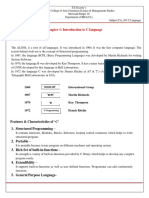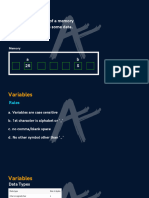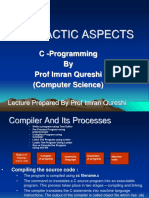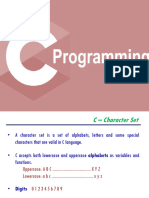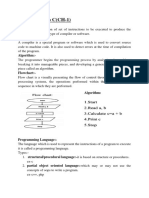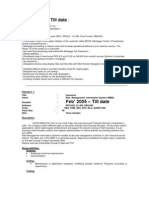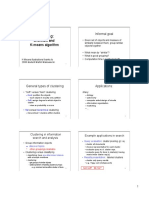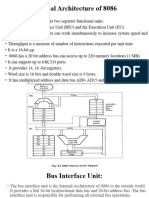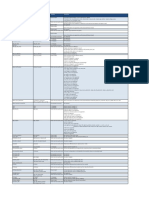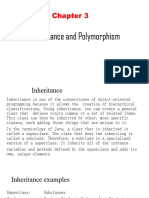0% found this document useful (0 votes)
21 views14 pagesC Cheatsheet
This document is a comprehensive cheatsheet for the C programming language, covering basic syntax, data types, operators, control structures, functions, pointers, structures, unions, file handling, dynamic memory allocation, mathematical functions, and randomization functions. It includes examples and explanations of key concepts such as variables, literals, escape sequences, and how to compile C programs using GCC. Additionally, it lists standard header files and their respective functions.
Uploaded by
psydoctorCopyright
© © All Rights Reserved
We take content rights seriously. If you suspect this is your content, claim it here.
Available Formats
Download as PDF, TXT or read online on Scribd
0% found this document useful (0 votes)
21 views14 pagesC Cheatsheet
This document is a comprehensive cheatsheet for the C programming language, covering basic syntax, data types, operators, control structures, functions, pointers, structures, unions, file handling, dynamic memory allocation, mathematical functions, and randomization functions. It includes examples and explanations of key concepts such as variables, literals, escape sequences, and how to compile C programs using GCC. Additionally, it lists standard header files and their respective functions.
Uploaded by
psydoctorCopyright
© © All Rights Reserved
We take content rights seriously. If you suspect this is your content, claim it here.
Available Formats
Download as PDF, TXT or read online on Scribd
/ 14






